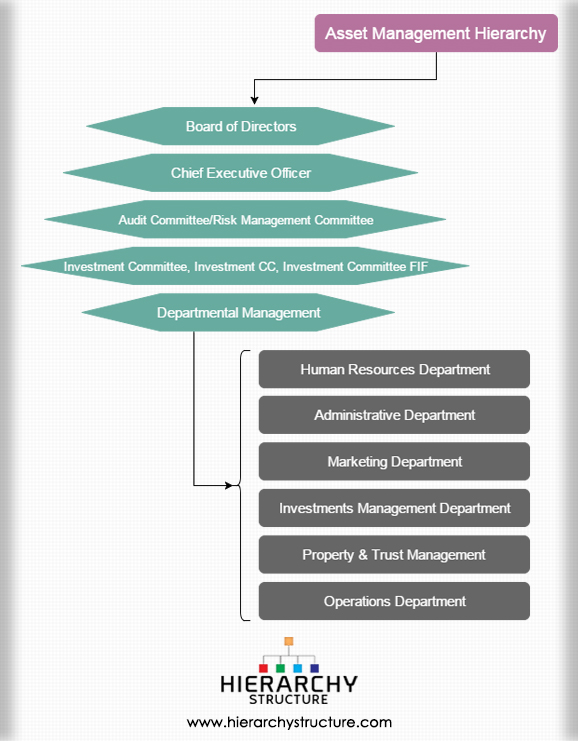Asset management hierarchy refers to the management hierarchy that asset management companies follow. An asset management company, long for AMC, is an entity whose sole purpose is to invest a pool of funds into assets i.e. securities, mutual funds, hedge funds etc. The pool of funds comes from the clients of the AMC. Given the critical nature of what the company does, its management is crucial. A basic description of the asset management company’s hierarchy structure is given below.

- Board of Directors: The board of directors is at the highest level of management hierarchy in any asset management company. These individuals take the most important decisions in the company regarding all of its functions.
- Chief Executive Officer: The CEO of the company follows suit after the Board and is the second most important management executive. He is directly appointed by the Board, usually from amongst themselves.
- Audit Committee/ Risk Management Committee: An AMC may either have both of these separate committees, only the Audit committee or a combined committee for both functions. Either way the committees as essential to the risk management for any AMC. These committees are responsible for making suitable recommendations to the Board regarding the financial soundness of the company.
- Investment Committee, Investment Credit Committee, Investment Committee FIF: These committees are again responsible for making of safe and sound decisions regarding the investment the AMC makes and the way in which it manages the assets. These committees assist the committees mentioned in (3) with the management of risk.
- Departmental Management: Next in the management hierarchy come the departmental divisions and their management. The said departments usually include the following:
- Human Resources Department
- Administrative Department
- Marketing Department
- Investments Management Department
- Property & Trust Management
- Operations Department
These are the few basic departments common to most asset management hierarchy structures. Each of these departments has a head manager or a Vice President followed by a chain of other managers for each function involved within the departments. While the HR and the admin departments aren’t usually layered with functions, they may directly be headed by the CEO himself; obviously assisted by a team of other managers and executives.
As for the rest of the departments which have multiple functions, each functional sub-division of the departments may have a senior manager, a manger and other junior managerial/ admin positions; depending upon the requirements of the specific company.
